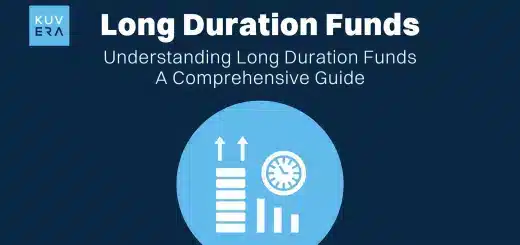Have you ever wondered why the Nifty 50 Index Fund is a top choice for investors? As a major benchmark in India’s stock market, the Nifty 50 includes the top 50 companies listed on the National Stock Exchange (NSE).
Understanding the Nifty 50 Index and its constituents can provide valuable insights into the Indian equity market and help you make informed investment decisions.
For instance, the Nifty Index has achieved a 3-year return of approximately 17%. But before we dive into the details, let’s first get to know a bit more about the index.
Introduction to the Nifty 50 Index
The Nifty 50 Index was established in 1996 by the National Stock Exchange of India and has since become a key indicator of the Indian stock market’s performance. It comprises 50 of the largest and most liquid Indian companies across various sectors, making it a robust representation of the Indian economy.
By tracking the performance of these top 50 companies, the Nifty 50 offers a snapshot of the overall market sentiment and economic health.
What Are Index Funds?
Index funds are a type of mutual fund designed to replicate the performance of a specific index. A Nifty 50 Index Fund mimics its benchmark index, the Nifty 50.
Them working for you, while you Netflix and chill.#Memes pic.twitter.com/Sm0ZVWbQHV
— Kuvera (@Kuvera_In) June 27, 2024
By investing in an index fund, you gain exposure to all the companies within that index, providing diversification and reducing risk compared to investing in individual stocks. Index funds in India, like the Nifty 50 Index Fund, are popular for their simplicity and cost-effectiveness.
Constituents of the Nifty 50 Index
As of July 2024, out of 50 companies, 11 companies form over 50% of the weightage of the Nifty 50 Index. You can check the weightage below:
| Top Stocks | Weightage |
|---|---|
| HDFC Bank Ltd. | 11.03 |
| Reliance Industries Ltd. | 9.23 |
| ICICI Bank Ltd. | 7.75 |
| Infosys Ltd. | 6.12 |
| ITC Ltd. | 4.15 |
| Larsen & Toubro Ltd. | 4.04 |
| Tata Consultancy Services Ltd. | 4.03 |
| Bharti Airtel Ltd. | 3.62 |
| State Bank of India | 3.04 |
| Axis Bank Ltd. | 3.01 |
| Others | 43.98 |
| Total | 100 |
Start investing in Index Funds.
Sector Composition by Percentage of the Nifty 50 Index
The sector composition by percentage is as follows:
| Sector | Percentage (%) |
|---|---|
| Financial Services | 32.76 |
| Information Technology | 13.76 |
| Oil, Gas & Consumable Fuels | 12.12 |
| Fast Moving Consumer Goods (FMCG) | 8.46 |
| Automobile and Auto Components | 8.22 |
| Healthcare | 4.34 |
| Construction | 4.04 |
| Metals & Mining | 3.68 |
| Telecommunication | 3.62 |
| Power | 3.23 |
| Consumer Durables | 2.57 |
| Construction Materials | 2.17 |
| Services | 1.05 |
How Are Companies Selected for the Nifty 50 Index?
The selection of companies for the Nifty 50 Index is based on several criteria:
Criteria 1: Free Float Market Capitalisation
Companies are chosen based on their free-float market capitalisation, which reflects the market value of shares readily available for trading.
Free float refers to the proportion of shares of a company that can be publicly traded and are not restricted. For example, if a promoter holds 45% of the company, only the remaining 55% would be considered a free float.
Let’s take an example – The market cap of Infosys is 7.2 Lakh Cr, which is less than 50% of the market cap of TCS, which is 15.1 Lakh Cr. Despite that, TCS has a weightage of just 4.03% against the weightage of Infosys which is 6.12%. This is because the free float market cap of Infosys is much higher than that of TCS.
The stock should have an average free float market capitalisation of at least 1.5 times the average free float market capitalisation of the smallest constituent in the Nifty 100 index.
Criteria 2: Market Impact Cost (Liquidity)
Market impact cost is the best measure of the liquidity of a stock. It accurately reflects the costs faced when actually trading an index. For a stock to qualify for possible inclusion in the Nifty 50, it must have traded at an average impact cost of 0.50% or less.
Criteria 3: Allowed to trade in F&O
Only those companies that are allowed to trade in F&O segment are eligible to be a constituent of the index. The index is reviewed and rebalanced semi-annually from January 31 and July 31 to ensure it includes the stocks that conform to the above methodology.
What is the Nifty 50 Total Return Index (TRI)?
The returns on Nifty 50 are calculated based solely on the price movements of the underlying constituents. It doesn’t take into account the impact of dividends paid by the company. Hence, it is also called the Price return index.
But for an investor who’s trying to match the performance of Nifty 50, what’s even more relevant is the Nifty 50 Total return index. Typically, the returns of Nifty 50 TRI are about 1-1.5% higher than that of Nifty 50.
| Index Returns (%) | QTD | YTD | 1 Year | 5 Years | Since Inception |
|---|---|---|---|---|---|
| Price Return | 3.35 | 14.82 | 26.31 | 17.55 | 11.83 |
| Total Return | 3.43 | 15.74 | 27.84 | 18.92 | - |
Source: NSE, as of July 24.
What Are Nifty 50 Index Funds and Their Benefits?
Nifty 50 Index Funds are mutual funds that aim to replicate the performance of the Nifty 50 TRI. By investing in these funds, you gain exposure to the top 50 companies in India, benefiting from the growth of well-established and financially stable companies.
Here are some benefits of investing in Nifty 50 Index Funds:
1. Diversification: Exposure to a broad range of sectors reduces risk.
2. Cost-Effective: Lower management fees compared to actively managed funds.
3. Simplicity: Easy to understand and invest in.
4. Performance: Historically, the Nifty 50 has delivered robust returns, making it a reliable investment choice.
To learn more and invest in Nifty 50 Index Funds, you can visit Kuvera’s Nifty 50 Index Fund page here.
Wrapping Up
Investing in the Nifty 50 Index Fund provides a simple, cost-effective, and diversified way to gain exposure to the Indian equity market. With its robust selection criteria and historical performance, the Nifty 50 remains a cornerstone for investors seeking steady growth and reduced risk. Whether you’re new to investing or looking to diversify your portfolio, Nifty 50 Index Funds offer a reliable path to achieve your financial goals.
By understanding the constituents and weightage of the Nifty 50 Index, along with the benefits of index funds in India, you can make more informed investment decisions and take advantage of the opportunities in the Indian stock market.
Interested in how we think about the markets?
Read more: Zen And The Art Of Investing
Watch here: Investing In Passive Funds
Start investing through a platform that brings goal planning and investing to your fingertips. Visit kuvera.in to discover Direct Plans of Mutual Funds and Fixed Deposits and start investing today.
AREVUK Advisory Services Pvt Ltd | SEBI Registration No. INA200005166
DISCLAIMER: Mutual Fund investments are subject to market risks. Read all scheme related documents carefully. Registration granted by SEBI, membership of BASL (in case of IAs) and certification from NISM in no way guarantee performance of the intermediary or provide any assurance of returns to investors. Investments in securities market are subject to market risks. Read all the related documents carefully before investing. The securities quoted are for illustration only and are not recommendatory.












